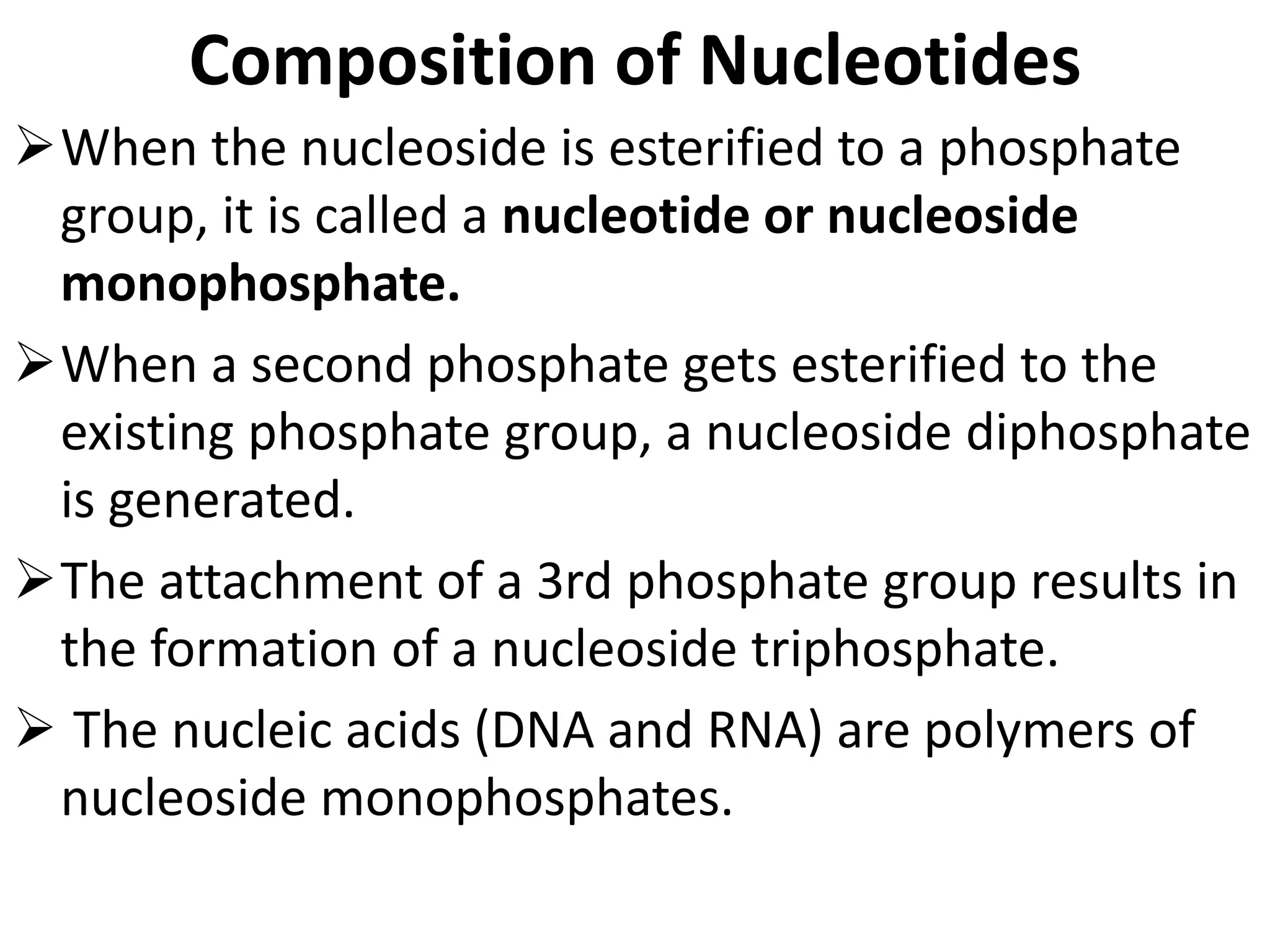This document discusses nucleotides, their chemistry and metabolism. It covers the following key points:
- Nucleotides are composed of a nitrogenous base, a pentose sugar (ribose or deoxyribose), and phosphate groups. They are precursors to nucleic acids DNA and RNA.
- Purines and pyrimidines are the nitrogenous bases present in nucleotides. Adenine, guanine, cytosine and thymine are the major bases.
- Nucleotides are synthesized through two pathways - de novo synthesis which builds purine rings from simple precursors, and the salvage pathway which recycles purines.
- The major sites of purine synthesis are the liver and degradation
















































































































































